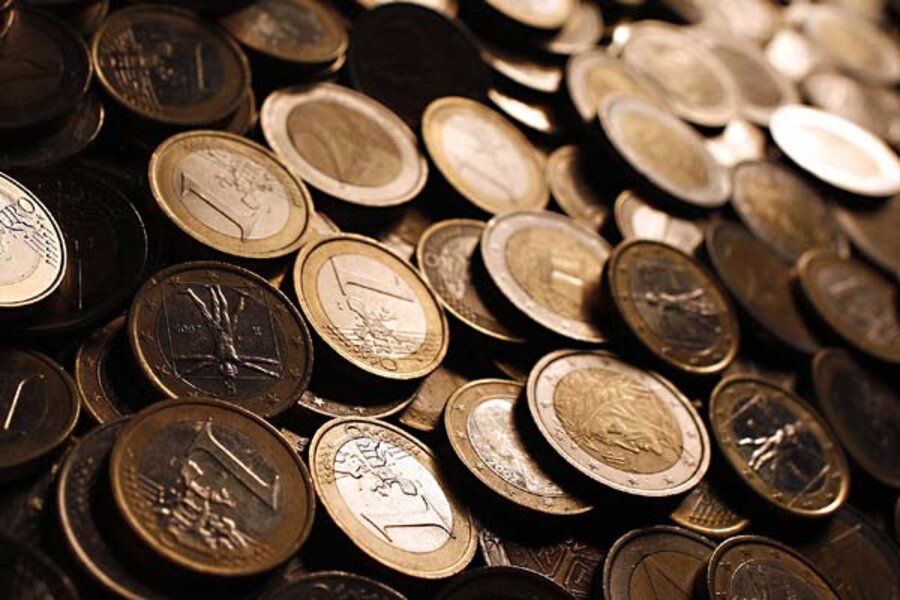What happens when countries can't borrow money?
Loading...
Darkness without a dawn…
The Dow down 167 yesterday. Gold down $48. Nothing to get excited about.
The excitement is still ahead. When the Dow cuts through the 10,000 mark and heads to 6,000. Stay tuned…
In the meantime, yesterday’s Financial Times told us that the industrialized nations will borrow $10 trillion this year. Next year, the figure should be higher.
Where does all that money come from? It’s more than the world’s total savings. Not that we know exactly, but total world GDP is about $50 to $60 trillion. Savings should be about 10% of that — or only about $5 to $6 trillion.
So how are the developed nations able to borrow so much?
With so much debt turning over, it makes the world financial system extremely vulnerable to inflation…or just a change of sentiment in the bond market. Which makes us wonder. What would happen if the lenders balk?
We are, as all Dear Readers know, in a Great Correction. And in a great correction asset prices fall…along with a general fall-off in employment, consumer spending, investment, GDP growth and all the other things that make a robust economy. Demand drops…which typically causes prices to fall (or at least not to rise as quickly as before). There is less demand for credit as for everything else. So, the pool of available bonds falls…forcing up bond prices and forcing down bond yields.
Got that?
Well, don’t worry if you don’t. Because there’s at least a 50/50 chance it won’t happen that way.
So far, the Great Correction has followed the usual script. Bond yields have fallen. Price inflation has generally come down. But demand for credit — as evidenced by the aforementioned $10 trillion government financing costs — is running hot. ‘Typically’ may not matter. Because this is no typical downturn. And it wouldn’t be too surprising if all this demand for credit pushed up bond yields.
Wouldn’t that be a drag?
And here we find ourselves with a grim, but philosophically amusing, insight. Typically, every cloud has a silver lining. Every glass that is half empty is also half full. And dawn follows even the darkest night. That’s just the way the world works. But what if the cloud has no lining, neither of silver nor of anything else that reflects light? And what if the glass is completely empty?
In the normal economic world, low interest rates are the half-full part of the correction glass. A correction comes. Asset prices go down…along with all the other things mentioned above. But interest rates go down too…which make it easier for new projects to clear the “hurdle rate.” At 6% interest, for example, a new project has to return at least 6% to breakeven. Any new investment that won’t produce more than a 6% minimum gain is quickly abandoned. But as the correction drives down yields, to say 3%, all of a sudden a lot more investments begin to make sense. Dawn comes.
Lower inflation rates…and lower asset prices…help too. As prices fall, shrewd investor and careful businessmen can put their money to work again. Employees are re-hired. Household earnings recover. Soon, the downturn is over.
Both booms and busts are, normally, self-correcting.
But leave it to the feds to stop the sunrise. This huge demand for credit from the industrialized governments could drive up interest rates. Imagine what that will do. Already in a slump, households, businesses and investors could find their borrowing costs going up, not down. They could find prices rising, too, especially the prices of energy and food. What a world…a major slump, but with rising prices and rising interest rates!
And then, consider what happens next. The feds will err again. They will feel obliged to finance government borrowing themselves. Here’s the Bank of International Settlements, giving us the heads up:
The Bank for International Settlements Sunday issued an oblique endorsement of coordinated action by the world’s largest central banks to ease funding conditions for banks. “A freezing of interbank markets in major funding currencies, as during the recent crisis, may require the ability to supply official liquidity in major currencies in an elastic manner,” the BIS wrote in its regular quarterly report.” — MarketWatch
It was only a week ago that 6 major central banks announced a coordinated rate cut — expected to juice up the markets. And now all major central banks seem ready and willing to sacrifice the integrity of their currencies in order to protect their bond speculators.
This is what we expected all along. But we didn’t expect it so soon. It causes us to revisit our “long, dark road to Tokyo” forecast. You remember our prediction: the US has already followed Japan through one “lost decade.” We figured it would lose another one as the Great Correction drags on.
But things could happen faster…and worser. Japan financed its own deficits with its own money. Now, everybody is running deficits. And the amounts to be refinanced are staggering. Bond buyers may balk…or simply be unable to swallow so much debt.
Which will cause the central banks to come into the picture — with coordinated money-printing. Instead of going down, bond yields and consumer prices could go up.
Think things are bad now? Wait until the economy has to deal with a Great Correction and inflation.
Bill Bonner
for The Daily Reckoning





